PFAD a potential substitute for fish oil
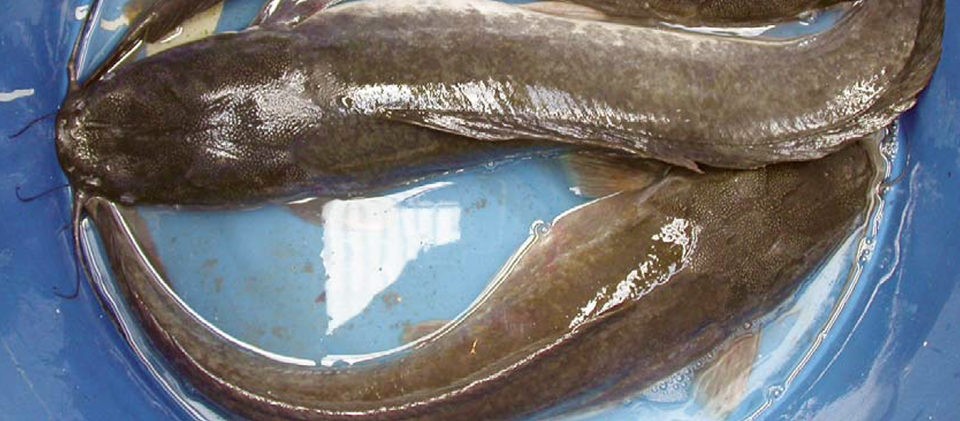
Fish oils are major dietary lipid sources in commercial catfish feeds. Feeding dietary fish oils that contain a high proportion of polyunsaturated fatty acids (PUFA) – which are highly susceptible to oxidation – can lead to increased oxidative stress for the fish and result in pathological conditions and deterioration of fillet quality.
The deterioration of catfish feeds due to the rancidity of dietary oils is especially prevalent in tropical countries, because of the hot, humid climates and lack of proper feed storage facilities on most catfish farms. The deleterious effects of lipid peroxidation, especially in cellular biomembranes that contain high amounts of PUFA, are further exacerbated if feeds are not supplemented with appropriate levels of antioxidants.
One practical and cost-effective way to produce high-energy diets without the damaging side effects of increased lipid radicals is to use a more saturated lipid source that contains high levels of natural antioxidants such as vitamin E.
Palm fatty acid distillate
Palm fatty acid distillate (PFAD), a byproduct of the refining of crude palm oil, is a potential substitute for fish oil in catfish diets. In Malaysia alone, about 402,500 metric tons (MT) of PFAD was generated for the year 2002, and with the rapid increase in global palm oil production, the amount of PFAD produced will rise substantially. PFAD contains about 80 percent free fatty acids and 14.5 percent acylglycerols with a fatty acid composition of about 64 percent saturates, 30 percent monoenes, and 6 percent PUFA.
Vitamin E accumulates in the PFAD fraction during palm oil processing and can be as high as 0.8 percent, making it one of the richest natural sources of this powerful antioxidant. While most conventional vegetable oils contain almost exclusively tocopherols, PFAD is unique because tocotrienols represent about 80 percent of the vitamin E content. Research in rat liver cells has shown that tocotrienols possess higher antioxidant activity against lipid peroxidation than alphatocopherol.
Catfish feeding study
The authors recently conducted a feeding trial with African catfish at the Fish Nutrition Laboratory at Universiti Sains Malaysia to evaluate the nutritive value of PFAD as a potential dietary lipid alternative to marine fish oil. Five isonitrogenous and isoenergetic practical diets were formulated with 0, 1.5, 3.0, 4.5 or 6.0 percent PFAD, which constituted 0, 25, 50, 75 or 100 percent substitution for dietary fish oil. All diets contained 80 mg allracαtocopheryl acetate per kilogram diet that was added as part of the vitamin premix.
Growth performance
Catfish growth was significantly better in fish fed the 25 percent PFAD diet compared to fish fed the control diet with fish oil as the sole lipid source. Higher levels of dietary PFAD supplementation did not improve growth performance further. It is probable the high level of omega-3 PUFAs present in fish oil caused the growth depression and that there is an optimum ratio between omega-3 and omega-6 fatty acids for maximum growth of African catfish.
Blending added fish oil with PFAD in a 3:1 ratio as in the 25 percent PFAD diet seemed to give the optimum dietary fatty acid composition as evidenced by the growth improvement. All fish appeared healthy at the end of the experiment, and there was no mortality during the eight-week feeding period.
Whole-body composition of the catfish fed the various diets was not significantly different with the exception of body lipid content, which was significantly lower in fish fed the 100 percent PFAD diet. Organ weights and hematocrits of all catfish remained normal.
Fillet quality
Fillet concentrations of tocopherols and tocotrienols increased linearly in response to increasing dietary concentrations originating from the added PFAD (Fig. 1). The deposition of tocotrienols in fish fillets adds value to the product, since the potential health benefits of tocotrienols in human diets include the prevention of cardiovascular diseases, cancer, and stroke.
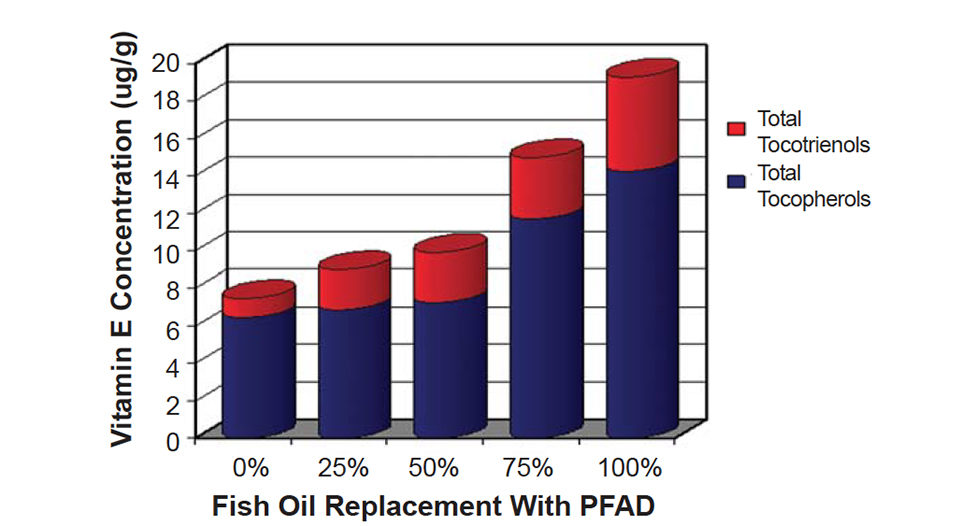
Alpha-tocopherol constituted 68.5 to 80.2 percent of the vitamin E composition of the catfish fillets, with total tocotrienols maintaining an equilibrium of 13.4 to 26.7 percent irrespective of dietary vitamin E composition. This was the first reported data on the deposition of dietary tocotrienols in fish tissue.
Malonaldehyde concentrations in the fillets of African catfish decreased significantly with increasing levels of dietary PFAD fed to the catfish (Fig. 2). The lower lipid peroxidation observed in the fillets of catfish fed higher dietary levels of PFAD could be due to the decreasing unsaturation of muscle lipids, as well as the elevated concentrations of tissue vitamin E.
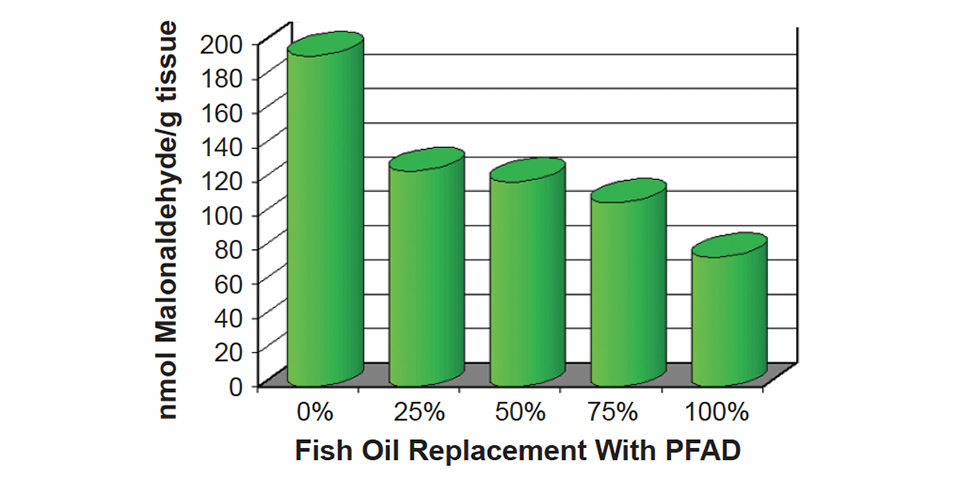
Antinutritive effects
Being a byproduct, PFAD has a wide range of quality and is known to contain trace amounts of impurities such as high-molecular-weight ketones that can decrease palatability to animals. Although the study showed no marked changes in body composition, body indices, or the hematocrits of catfish fed diets with high levels of PFAD, further research would be necessary to determine the antinutritive and toxicological effects, if any, of this byproduct. Long-term feeding trials are currently being conducted at Universiti Sains Malaysia in these areas.
(Editor’s Note: This article was originally published in the December 2005 print edition of the Global Aquaculture Advocate.)
Now that you've reached the end of the article ...
… please consider supporting GSA’s mission to advance responsible seafood practices through education, advocacy and third-party assurances. The Advocate aims to document the evolution of responsible seafood practices and share the expansive knowledge of our vast network of contributors.
By becoming a Global Seafood Alliance member, you’re ensuring that all of the pre-competitive work we do through member benefits, resources and events can continue. Individual membership costs just $50 a year.
Not a GSA member? Join us.
Authors
-
Wing-Keong Ng, Ph.D.
Fish Nutrition Laboratory
School of Biological Sciences
Universiti Sains Malaysia
Penang 11800, Malaysia[121,109,46,109,115,117,64,103,110,107,119]
-
Wang Yan, M.Sc.
Fish Nutrition Laboratory
School of Biological Sciences
Universiti Sains Malaysia
Penang 11800, Malaysia
Tagged With
Related Posts
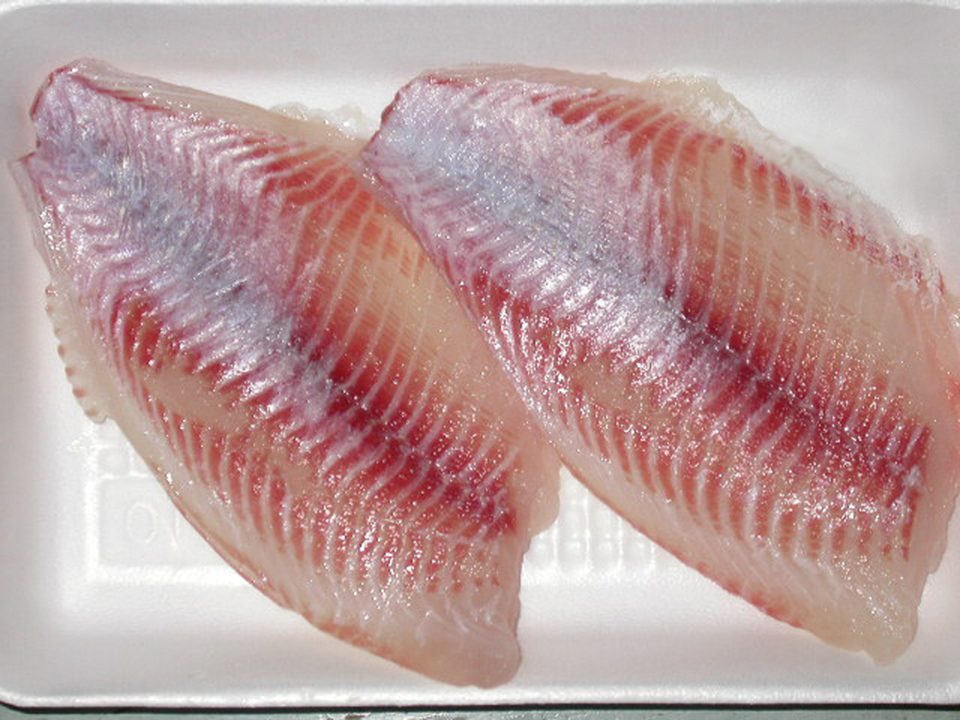
Aquafeeds
Palm oil replaces fish oil in tilapia feed
In studies, the physical and sensory qualities of fillets from tilapia fed diets with 100 percent substitution of fish oil with various palm oil fractions were generally not affected by the change of dietary oil source.
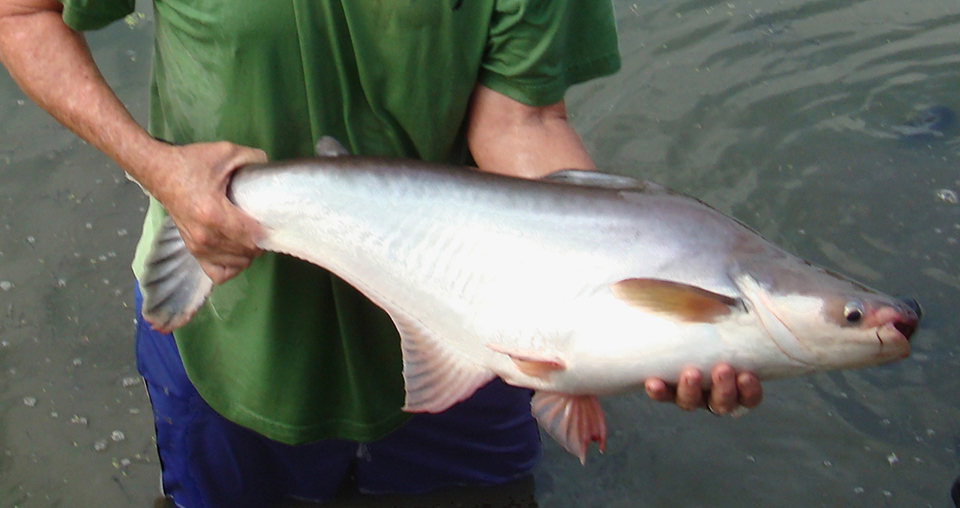
Health & Welfare
Advances in fish hatchery management
Advances in fish hatchery management – particularly in the areas of brood management and induced spawning – have helped establish aquaculture for multiple species.
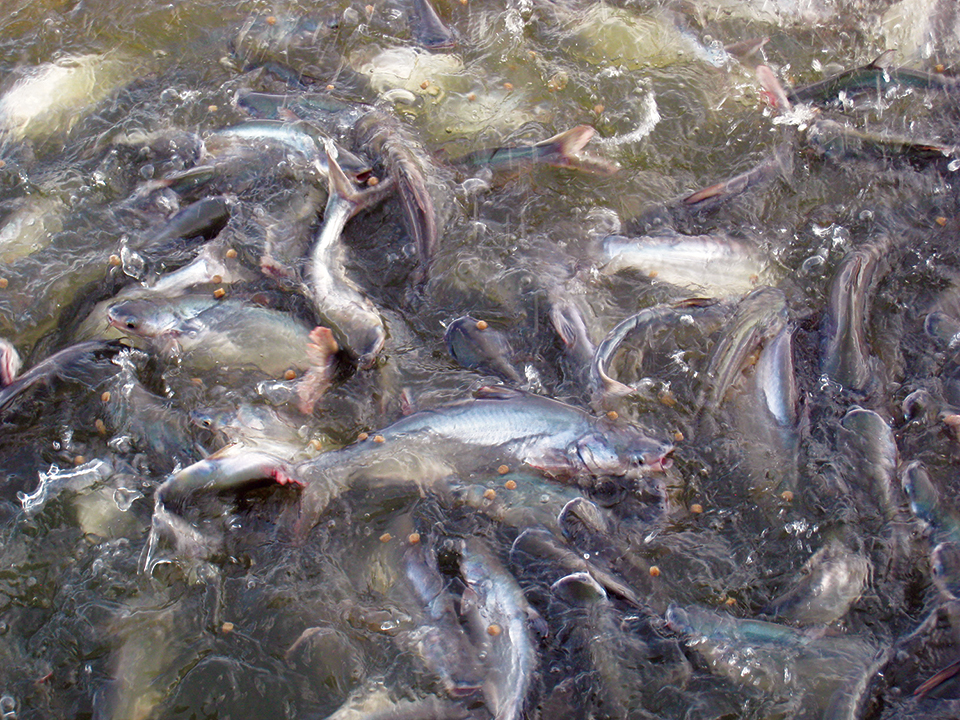
Health & Welfare
Amino acid supplementation reduces protein levels in pangasius diets
Trials show that supplementation with amino acids could reduce protein levels from a typical 28 percent to 23 percent in pangasius diets.
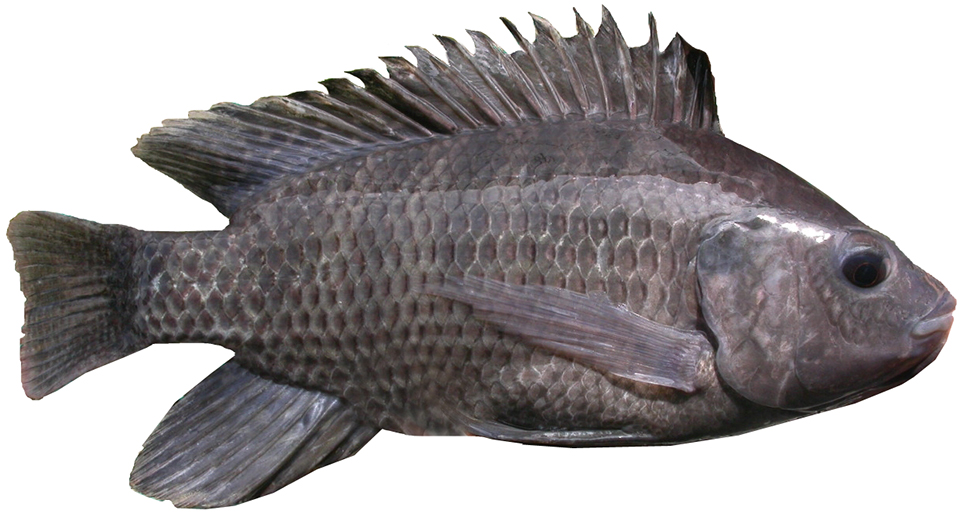
Health & Welfare
Vitamin E levels in tilapia diets affect fillet quality
Vitamin E is a required element in tilapia diets influenced by dietary lipid levels. A 5 percent lipid diet is sufficient to maintain immune responses and healthy reproduction.


